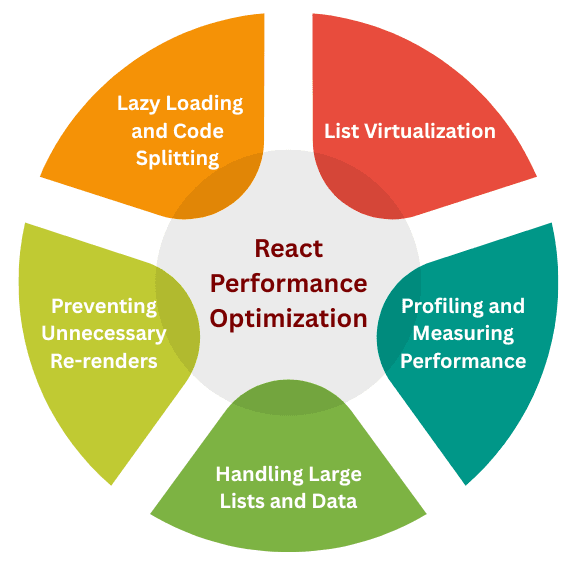React Performance Optimization
Building fast and responsive applications is essential for a great user experience. React is already optimized for performance, but as your app grows, unnecessary re-renders, large bundle sizes, and inefficient data handling can slow it down.
That’s where React performance optimization techniques come in.

1. Preventing Unnecessary Re-renders
React re-renders components whenever their state or props change. However, sometimes these re-renders are unnecessary. To avoid them, you can use:
React.memo()useCallback()useMemo()
2. Lazy Loading and Code Splitting
Large applications can take longer to load. To improve load time, React supports lazy loading and code splitting.
React.lazy()andSuspense
3. List Virtualization
Rendering large lists can slow down the UI. Libraries like React Window and React Virtualized render only visible items, improving rendering performance.
4. Profiling and Measuring Performance
Use React Developer Tools Profiler to:
- Measure render times
- Identify slow components
- Track unnecessary re-renders
5. Handling Large Lists and Data
When dealing with large datasets:
- Implement pagination or infinite scrolling
- Fetch data in chunks rather than all at once
- Use windowing to render only visible content

